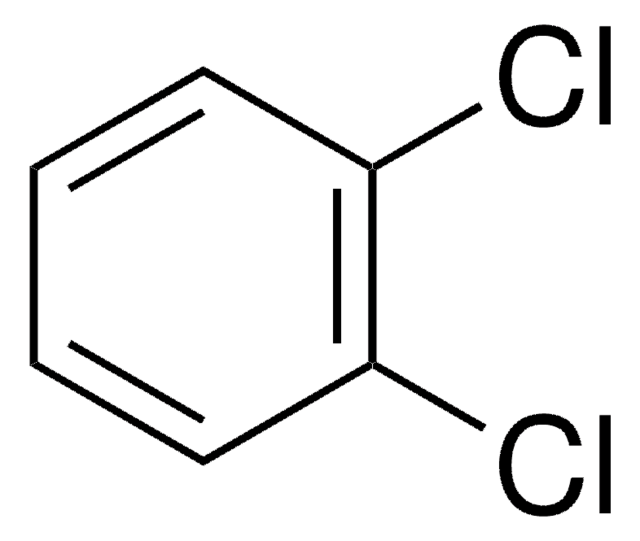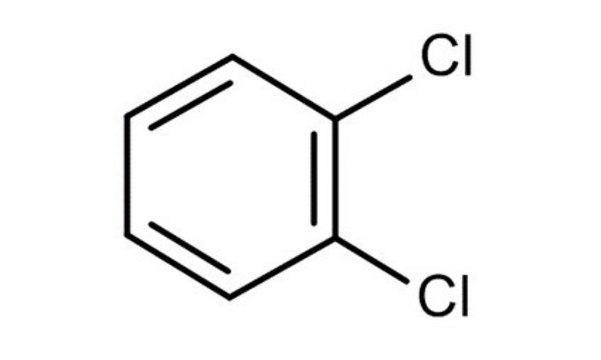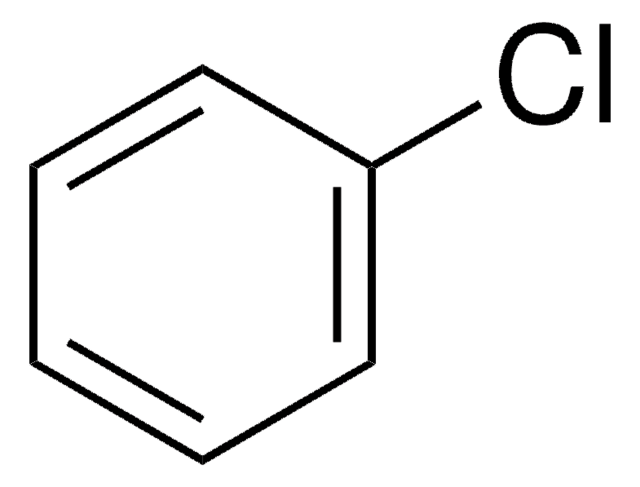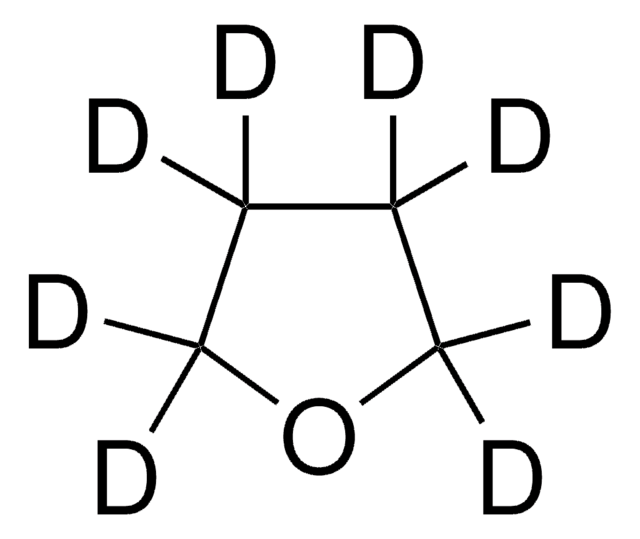推荐产品
蒸汽密度
5.1 (vs air)
质量水平
蒸汽压
1.2 mmHg ( 20 °C)
1.6 mmHg ( 35 °C)
方案
99%
表单
liquid
自燃温度
1198 °F
纯化方式
glass distillation
expl. lim.
9.2 %
技术
HPLC: suitable
杂质
<0.020% water
蒸发残留物
<0.0005%
折射率
n20/D 1.551 (lit.)
沸点
178-180 °C (lit.)
mp
−18-−17 °C (lit.)
密度
1.306 g/mL at 25 °C (lit.)
λ
H2O reference
紫外吸收
λ: 296 nm Amax: 1.00
λ: 300 nm Amax: 0.30
λ: 305 nm Amax: 0.20
λ: 335 nm Amax: 0.05
λ: 375-400 nm Amax: 0.01
SMILES字符串
Clc1ccccc1Cl
InChI
1S/C6H4Cl2/c7-5-3-1-2-4-6(5)8/h1-4H
InChI key
RFFLAFLAYFXFSW-UHFFFAOYSA-N
正在寻找类似产品? 访问 产品对比指南
应用
- 通过表面生长的碳纳米管调节碳气凝胶的微观结构和增强VOC去除性能。:这项研究提出了一种使用表面改性碳气凝胶增强去除挥发性有机化合物(包括1,2-二氯苯)的新方法(Cheng等人,2024年)。
- 电负性在ZnO上形成环境持久性自由基(EPFR)中的作用。:这项研究调查了表面化学如何影响持久性自由基的形成,包括氧化锌表面上1,2-二氯苯产生的自由基(Ahmed等人,2024年)(Ahmed等人,2024年)。
- Cu(I)配合物催化N-杂环的脱氢。:本文讨论了铜(I)配合物在催化N-杂环脱氢中的应用,包括涉及1,2-二氯苯衍生物的反应(Shen等人,2024年)(Shen等人,2024年)。
- 实验室产生的1,2-二氯苯(DCB)和2-一氯苯酚(MCP)的EPFR的新特征。:本出版物探讨了实验室产生的1,2-二氯苯自由基的特性,阐明了其环境影响和降解过程(Khachatryan等人,2024年)(Khachatryan等人,2024年)。
- C-Cl光电离截面和氯化有机化合物的绝对光电离截面的估计。:这项研究提供了氯化有机化合物(包括1,2-二氯苯)的光电离特性的关键数据,这对于理解其在大气化学中的行为非常重要(Chen等人,2024年)(Chen等人,2024年)。
警示用语:
Warning
危险分类
Acute Tox. 4 Inhalation - Acute Tox. 4 Oral - Aquatic Acute 1 - Aquatic Chronic 1 - Eye Irrit. 2 - Skin Irrit. 2 - Skin Sens. 1B - STOT SE 3
靶器官
Respiratory system
储存分类代码
6.1C - Combustible acute toxic Cat.3 / toxic compounds or compounds which causing chronic effects
WGK
WGK 2
闪点(°F)
150.8 °F - closed cup
闪点(°C)
66.0 °C - closed cup
法规信息
我们的科学家团队拥有各种研究领域经验,包括生命科学、材料科学、化学合成、色谱、分析及许多其他领域.
联系技术服务部门





